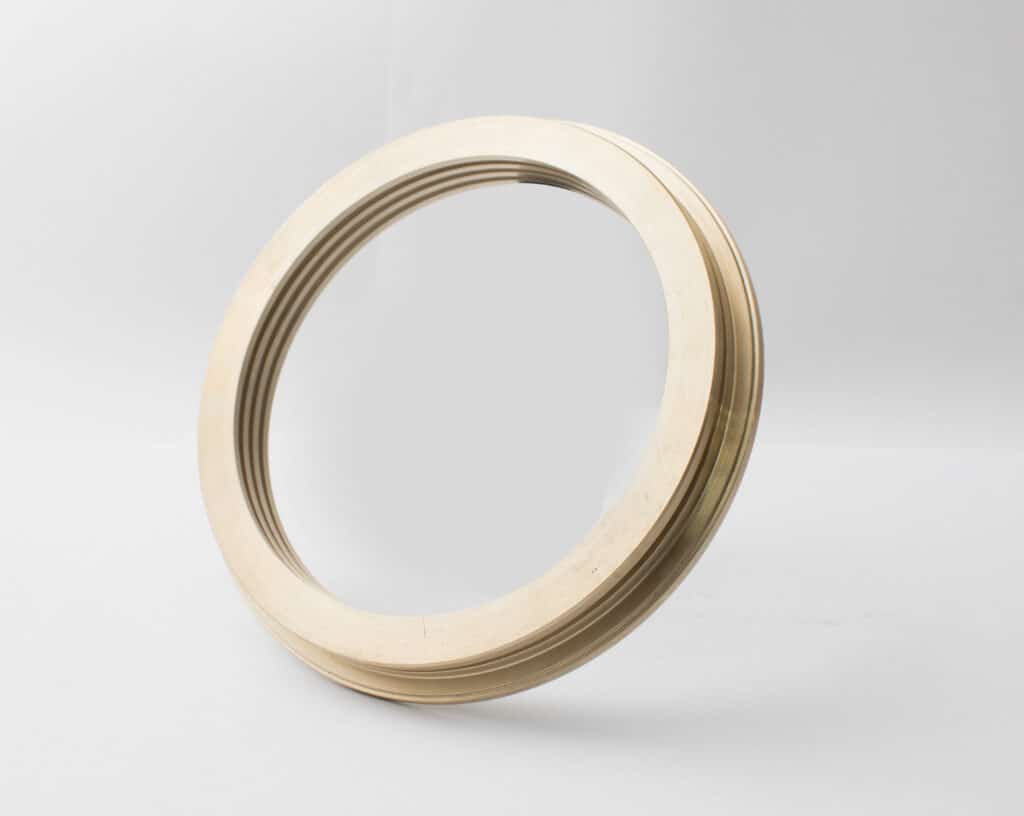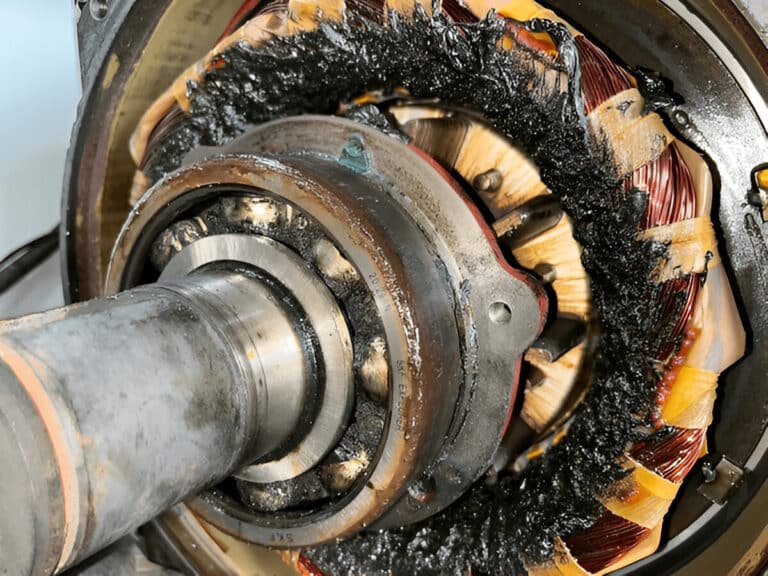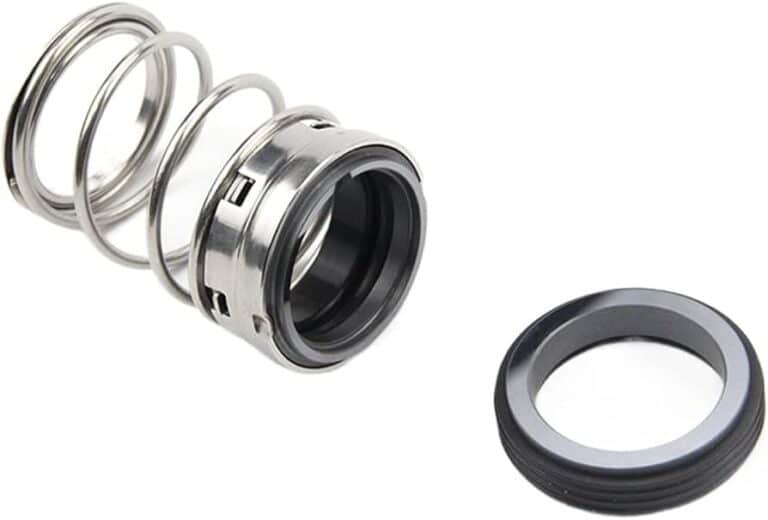A labyrinth mechanical seal is a non-contact sealing device that prevents fluids or gases from leaking between rotating and stationary parts without actually touching them. Picture a maze with multiple twists and turns—that’s essentially what this seal creates for any fluid trying to escape.
Unlike traditional seals that rely on physical contact, labyrinth seals work by creating a tortuous path that makes it extremely difficult for fluids to pass through. They’re commonly found in turbines, compressors, and pumps where you need to keep oil in and contaminants out.

How Does Labyrinth Mechanical Seal Work
Labyrinth seals work by forcing fluids through a series of tight clearances and chambers that repeatedly expand and contract, causing pressure drops that prevent leakage. When fluid enters the seal, it encounters a series of ridges or teeth that create turbulence and resistance.
Think of it like trying to run through a crowded obstacle course versus sprinting down an open hallway. The fluid loses energy each time it hits an obstacle, changes direction, or enters a new chamber.
The seal creates multiple pressure-dropping stages without any parts touching each other. This non-contact design means there’s virtually no wear during normal operation, which is why these seals can last for years without maintenance.
Types of Labyrinth Seals
Straight-Through Labyrinth Seals
Straight-through labyrinth seals feature a series of parallel ridges that create a straight path with multiple restrictions. The fluid must squeeze through each narrow gap, losing pressure at every stage.
These are the simplest and most cost-effective labyrinth seals to manufacture. They work best in applications with moderate pressure differences and where some minor leakage is acceptable.
Stepped Labyrinth Seals
Stepped labyrinth seals incorporate ridges at different heights, creating a staircase-like pattern that forces the fluid to change elevation as it moves through. This design creates additional turbulence and energy loss compared to straight-through designs.
The stepping action causes the fluid to expand and contract more dramatically, resulting in better sealing performance. You’ll find these in high-pressure applications like steam turbines where minimizing leakage is critical.
Hybrid Labyrinth Seals
Hybrid labyrinth seals combine features from different seal types, often incorporating both labyrinth paths and other sealing elements like brush bristles or abradable coatings. These designs offer the best of both worlds—the non-contact benefits of labyrinths with enhanced sealing from additional components.
For example, a hybrid seal might use labyrinth ridges for the primary sealing with a backup brush seal for extra protection. This combination provides excellent performance across a wider range of operating conditions.
Advantages of Labyrinth Seals
- No contact between parts – Since nothing touches, there’s virtually no wear, meaning these seals can last for decades without replacement
- No lubrication needed – They work dry, eliminating the need for oil systems and reducing maintenance costs
- High temperature tolerance – Can handle extreme heat (up to 1000°F or more) that would destroy conventional seals
- High-speed capability – Perfect for turbines and compressors running at thousands of RPM without generating heat from friction
- Contamination resistant – Dirt and debris can’t damage the seal since there’s no contact surface to scratch
- Simple design – Fewer moving parts mean less can go wrong, improving reliability
- Low maintenance – Once installed, they typically run for years without any attention
Disadvantages of Labyrinth Seals
- Higher leakage rates – They allow more fluid to escape compared to contact seals, making them unsuitable for toxic or expensive fluids
- Require precise manufacturing – The small clearances demand tight tolerances, increasing initial cost
- Poor performance at low speeds – They work best at high speeds where aerodynamic effects help reduce leakage
- Not suitable for high-pressure differences – Large pressure drops across the seal can cause excessive leakage
- Size limitations – They typically need more axial space than other seal types
- Sensitive to shaft movement – Excessive vibration or misalignment can increase clearances and reduce effectiveness
Materials of Labyrinth Seals
- Aluminum – Lightweight and easy to machine, ideal for aerospace applications where weight matters
- Stainless steel – Provides excellent corrosion resistance and strength for chemical processing equipment
- Bronze – Offers good wear resistance and is often used in marine applications
- Carbon steel – Cost-effective for general industrial use where corrosion isn’t a concern
- Nickel alloys – Handle extreme temperatures and corrosive environments in power generation turbines
- Polymer materials – Used in food processing where metal contamination must be avoided
- Titanium – Combines light weight with exceptional strength for specialized aerospace and racing applications
Applications of Labyrinth Seals
- Gas turbines – Seal bearing chambers and prevent hot gas ingestion in jet engines and power plants
- Steam turbines – Control steam leakage between stages to maintain efficiency
- Centrifugal compressors – Prevent process gas from escaping at shaft penetrations
- Pumps – Protect bearings from process fluids in chemical and petroleum applications
- Gearboxes – Keep lubricating oil inside while preventing contamination from outside
- Electric motors – Seal bearing housings in dusty or wet environments
- Mining equipment – Protect rotating equipment from abrasive dust and debris
- Paper mills – Seal rolls and cylinders exposed to moisture and chemicals
What Is the Difference Between a Labyrinth Seal and a Mechanical Seal
The main difference is that labyrinth seals never touch the rotating shaft, while mechanical seals rely on physical contact between rotating and stationary faces. Mechanical seals create a positive seal with virtually zero leakage by pressing two precisely machined faces together.
Labyrinth seals accept some controlled leakage in exchange for zero wear and no heat generation. They’re ideal when you can tolerate minor leakage but need long service life.
Mechanical seals require cooling and lubrication due to friction heat, while labyrinth seals run dry. However, mechanical seals provide superior sealing when you absolutely cannot allow any fluid to escape.
The choice depends on your priorities: if you need zero leakage, go with mechanical seals; if you want minimal maintenance and long life, choose labyrinth seals.
What Is the Difference Between a Labyrinth Seal and a Lip Seal
Labyrinth seals use a non-contact maze design, while lip seals press a flexible lip directly against the rotating shaft. Lip seals provide excellent sealing at low pressures and speeds but wear out over time due to constant contact.
The flexible lip material (usually rubber or PTFE) eventually degrades from heat and friction. In contrast, labyrinth seals can run indefinitely without wear since nothing touches.
Lip seals are cheaper upfront and take up less space, making them perfect for automotive applications. Labyrinth seals cost more initially but excel in high-speed industrial equipment where replacement would be expensive.
Temperature limits also differ significantly—lip seals typically fail above 200°F, while metal labyrinth seals handle temperatures exceeding 1000°F.
FAQs
How much leakage should I expect from a labyrinth seal?
Labyrinth seals typically allow 1-3% leakage depending on design and operating conditions. The exact amount depends on clearances, pressure differential, and fluid properties, but some controlled leakage is always expected with this seal type.
Can labyrinth seals be repaired or must they be replaced?
Most labyrinth seals can be repaired by re-machining the ridges or replacing damaged sections. Since they don’t wear during normal operation, damage usually comes from improper installation or foreign object strikes, which often affects only specific areas.
What causes a labyrinth seal to fail?
Common failure causes include thermal expansion closing clearances, foreign debris clogging passages, or mechanical damage from shaft contact during abnormal operation. Poor initial design with incorrect clearances can also lead to premature failure.
How do I determine the correct clearance for a labyrinth seal?
Clearance depends on shaft diameter, operating temperature, speed, and thermal expansion rates. Generally, start with 0.010-0.020 inches per inch of shaft diameter, then adjust based on your specific operating conditions and manufacturer recommendations.
Are labyrinth seals suitable for sealing liquids?
Yes, but they’re most effective with viscous liquids or at lower pressure differentials. Thin liquids like water leak more readily than thick oils, and gas sealing applications typically show better performance than liquid sealing.
What’s the typical lifespan of a labyrinth seal?
With proper design and installation, labyrinth seals often last 20-30 years or more. Since there’s no contact wear, the seal essentially lasts until external damage occurs or operating conditions change beyond design parameters.



